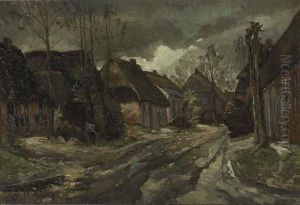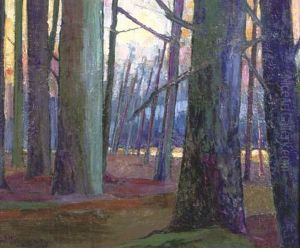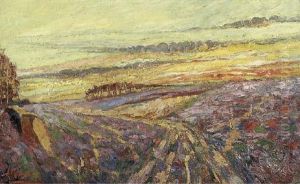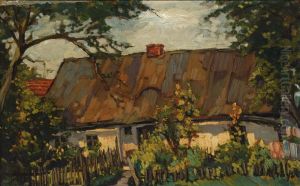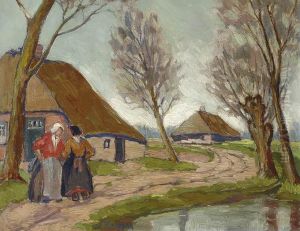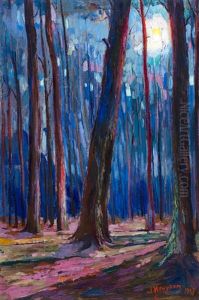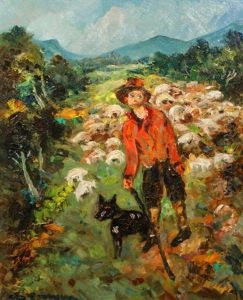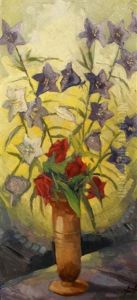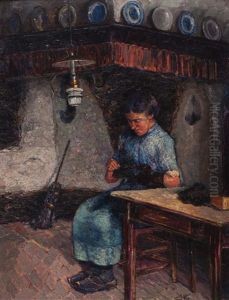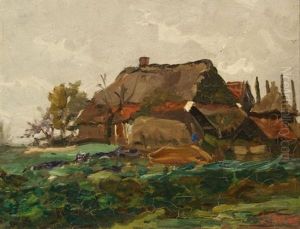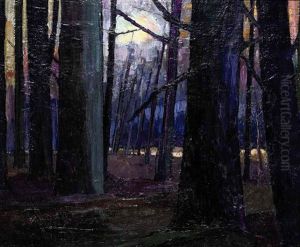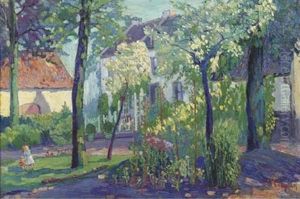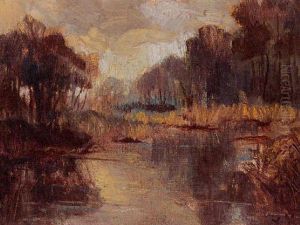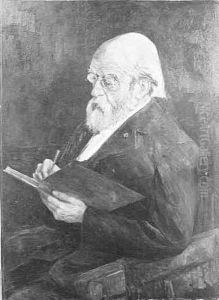Jan Kruysen Paintings
Jan Kruysen was a Dutch painter born on January 8, 1874, in Oirschot, Netherlands. He was known for his expressive and emotionally charged paintings, which often depicted scenes of rural life, landscapes, religious themes, and portraits. Kruysen's work is characterized by its bold use of color, dynamic brushwork, and a deep sense of empathy towards his subjects, which often included the poor and marginalized individuals of society.
Kruysen's early life was marked by a profound connection to the countryside and the people who lived there, which would later influence the subjects of his art. He initially trained under his father, who was a decorative painter, learning the basics of painting and drawing. Seeking to further his education, Kruysen attended the Royal Academy of Fine Arts in Antwerp, Belgium, where he was exposed to the works of the Flemish Masters. These studies deeply impacted his artistic direction, leading him to incorporate elements of their style while developing his unique voice.
Throughout his career, Jan Kruysen struggled for recognition and financial stability. Despite these challenges, he remained committed to his artistic vision, often portraying the harsh realities of peasant life with a profound sense of dignity and resilience. His work received mixed reactions from the public and critics during his lifetime, with some praising his raw, unfiltered portrayal of life and others finding it too somber or harsh.
Kruysen was also influenced by the Expressionist movement, which was gaining popularity in Europe during his career. This influence is evident in his use of exaggerated colors and forms to convey emotion and atmosphere, setting him apart from his contemporaries who favored more traditional styles.
Despite his relative obscurity during much of his lifetime, Jan Kruysen's work has gained recognition posthumously, with his paintings now considered significant contributions to Dutch art, particularly in their portrayal of the human condition and rural life. He died on March 5, 1938, in Oirschot. Today, his works are held in various Dutch museums and collections, appreciated for their emotional depth and artistic integrity.
